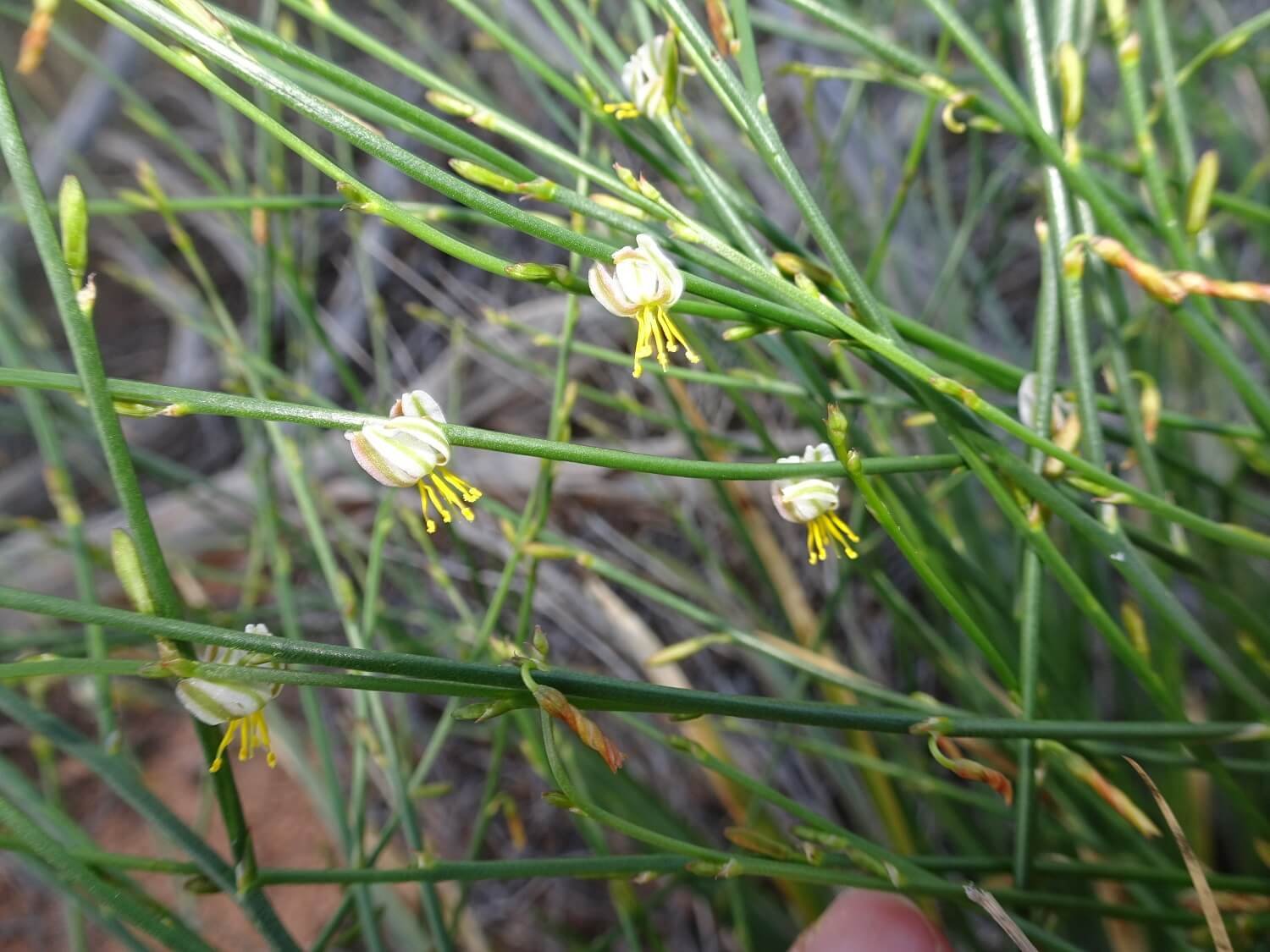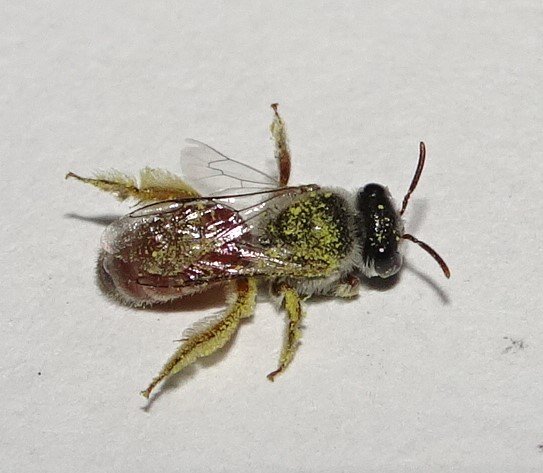Strange flowers, stranger bees
The Sand Lily (Corynotheca licrota) is considered endangered in Victoria but it has scattered occurrences in all mainland states, particularly tracking the Darling and lower Murray River. Here, it is restricted to the far north-west of the state, where it grows on deep sand. The genus has recently been revised with 13 species described in some detail (1).
It took me ages to finally see the flowers of the Sand Lily. Not only are they tiny, but they open at night! I was out spotlighting in summer when I found these. What pollinators are these plants attracting if they flower in the evening and into the night? It seems that an “unidentified native bee” (1, 2, 3) is responsible. Which one? There are about 1500 species of native bees, 58 genera and five families. More research is required!
I actually wrote most of this post two weeks ago but the term “unidentified” just didn’t sit well with me. So, one evening I staked out a few Sand Lily plants with my butterfly net (I just bought it, and it is so cool!!). I noticed some tiny bees with massive yellow legs. With one swipe from my huge net, I caught the entire plant … and then had to find the tiny bee amongst the folds of material. A few minutes in the fridge and the now angry, tiny bee was still enough to photograph. Then I had to wait for the bee book (4) to arrive from the library…
And here is the bee. The pollen from its legs is now smeared all over its hairy body. I initially thought this was a Lasioglossum bee, but Terry Houston (who wrote the bee book!) said: “I can tell you that your bee is not a Lasioglossum but, judging by the fore wing veins, almost certainly a Leioproctus. You are correct that I would need the bee in hand to identify it further. However, given its size and reddish abdomen, I suspect it might be a member of the subgenus Odontocolletes.”
Bees in the family Colletidae, like Leioproctus, are solitary and burrow into the ground to nest. They’re called “Membrane Bees” because they use salivary secretions to form a clear membrane that lines the brood cells. The brood cells are provisioned with honey and nectar crafted into a ball or thick paste.
But back to the Sand Lily. A few native bees are known to be “dim light foragers”. Instead of foraging in the daytime like a normal bee, these unusual species are active between dusk and dawn, possibly to avoid heat or competition for nectar and pollen (5). Ah-ha! Dim-light foraging is a perfect match for our night-blooming Sand Lily. But there the trail ran cold. The role of nocturnal bees in pollination is vastly understudied, possibly because entomologists have a daytime bias! (6). And Terry has cast some doubt, noting that the ocelli (simple eye) of my bee were not enlarged as he would expect for a dim-light forager. Perhaps I should have stuck with “unidentified bee” …
Sand Lilys have rhizomatous stems and resprout quickly after fire and we’ve seen them resprout after drought as well. Our Sand Lilys retain their leaves, but in other species, the flower stems take on the task of photosynthesis. The other interesting thing is the twisted tepals (outer whorl) of the closed flowers. This is due to the “tepal apex trichomes” (and because everyone loves an acronym: known as TAT). These hook-like hairs hold the flower closed and allow for it to open rapidly and perhaps synchronously. This could concentrate pollinator visitation to promote effective pollination and outcrossing (1). TAT is also really obvious in the Mallee Rush Lily (Tricoryne tenella), a closely related species in the same Asphodelaceae family.
Note: I initially misidentified my bee as a Lasioglossum, in the subgenus Parasphecodes (92 species). I was quite excited because these bees are generally communal. Not solitary like most native bees, but not forming a colony with a queen like the feral honeybee. Parasphecodes nests have a common access burrow, but the females each dig their own underground chamber for their offspring. Each chamber contains a single egg laid on a lovingly prepared ball of pollen laced with vomited-up honey. Provisioning the offspring with food is a bit like a hunting wasp stuffing its nest full of spiders.
I collected this bee at dusk (7.00pm with sunset at 8.43pm on that night 21st January, 2022)
I have also just discovered an amazing resource that illustrates all the key features for the various bee families. This has opened up a whole new world for me. https://www.beeawarekids.com.au/the-australian-bee-genera.html
References
Barrett et al. (2021) Taxonomic revision of Corynotheca (Hemerocallidaceae / Asphodelaceae)
Russell Barrett’s blog The Plant Press - Untangling the sand lilies - a new classification
Eichler (2018) Flowering of the Sand Lily Corynotheca licrota: observations in Victoria
Houston (2018) A guide to native bees of Australia
Somanathon et al (2020) Nocturnal Bees Feed on Diurnal Leftovers and Pay the Price of Day – Night Lifestyle Transition
Dorey et al. (2020) Morphometric comparisons and novel observations of diurnal and low-light-foraging bees (Thanks Judy Allen for sharing this paper with me)





